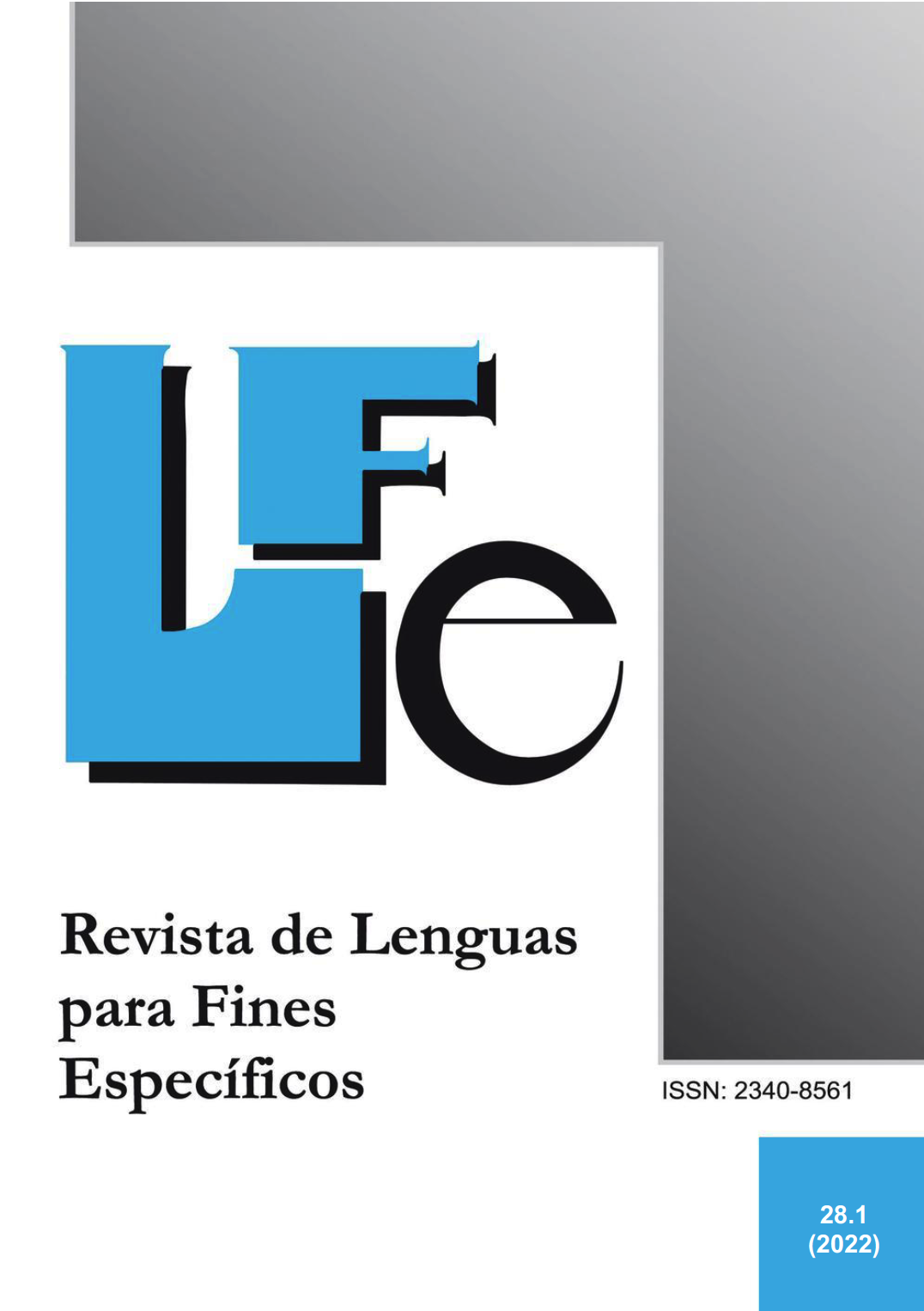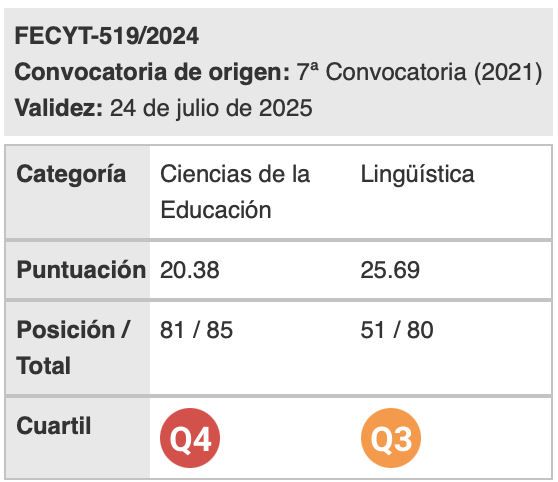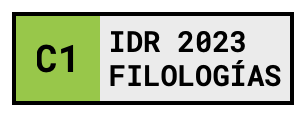Introduction to the Special Issue "On Communicative Skills in Foreign Language Teaching and Academic Language Instruction: Tools, Resources and Methods in the Digital Era"
Palabras clave:
era digital, lenguas especializadas, enseñanza de lenguas especializadasResumen
This volume, as hinted by the title, adds to the current debate between foreign and academic language instruction and digital resources (or methods). Such debate has been particularly present in the last two years during Covid-19 pandemic lockdown, in which teachers and instructors have been challenged to design fully digital resources to continue with their intended syllabuses. Regardless of the outcomes of the pandemic, one silver lining is that this new situation has had an impact on pedagogical approaches, particularly those that are most significant to language instruction and practice, thus “[showing] promise for assuring that [language learners] can develop academic language proficiency” (Ranney, 2012, p. 560). The need to find effective strategies and methods, conceived to enhance language learners’ fluency and communicative (and academic) achievement, conforms to, among others, the long-standing theories on interpersonal communicative skills and language academic proficiency (Cummins 1981; 2000). These theories, especially those revolving around the so-called Basic Interpersonal Communication Skills (BICS) and Cognitive Academic Language Proficiency (CALP), demonstrate that linguistic resources should be necessarily adapted to the scopes of social interaction and interpersonal communication.
Descargas
Citas
Cummins, J. (1981). Age on arrival and immigrant second language learning in Canada: a reassessment. Applied Linguistics, 2, 132– 49. https://doi.org/10.1093/applin/2.2.132
Cummins, J. (2000). Academic language learning, transformative pedagogy, and information technology: towards a critical balance. TESOL Quarterly, 34(3), 537– 47. https://doi.org/10.2307/3587742
Ranney, S. (2012). Defining and Teaching Academic Language: Developments in K-12 ESL. Language and Linguistics Compass, 6(9), 560-574. https://doi.org/10.1002/lnc3.354
Richardson Bruna, K., Vann, R., & Perales Escudero M. (2007). What's language got to do with it?: A case study of academic language instruction in a high school “English Learner Science” class. Journal of English for Academic Purposes, 6(1), 36-54. https://doi.org/10.1016/j.jeap.2006.11.006
Roth, W. M. (2005). Telling in purposeful activity and the emergence of scientific language. In R.K. Yerrick, W. M. Roth (Eds.). Establishing scientific discourse communities: Multiple voices of teaching and learning research (pp. 45-71). Mahwah, NJ: Lawrence Erlbaum.
Descargas
Publicado
Cómo citar
Número
Sección
Licencia
Aquellos autores/as que tengan publicaciones con esta revista, aceptan los términos siguientes:
- Los autores/as conservarán sus derechos de autor y garantizarán a la revista el derecho de primera publicación de su obra, el cuál estará simultáneamente sujeto a la Licencia de reconocimiento de Creative Commons que permite a terceros compartir la obra siempre que se indique su autor y su primera publicación esta revista.
- Los autores/as podrán adoptar otros acuerdos de licencia no exclusiva de distribución de la versión de la obra publicada (p. ej.: depositarla en un archivo telemático institucional o publicarla en un volumen monográfico) siempre que se indique la publicación inicial en esta revista.
- Se permite y recomienda a los autores/as difundir su obra a través de Internet (p. ej.: en archivos telemáticos institucionales o en su página web) antes y durante el proceso de envío, lo cual puede producir intercambios interesantes y aumentar las citas de la obra publicada. (Véase El efecto del acceso abierto).

Revista de Lenguas para fines específicos is licensed under a Creative Commons Reconocimiento-NoComercial-SinObraDerivada 4.0 Internacional License.























